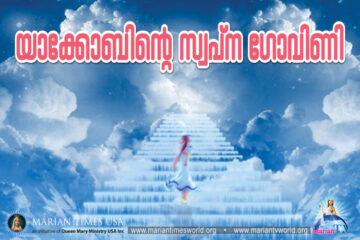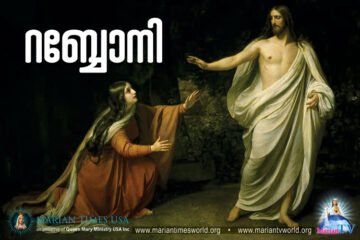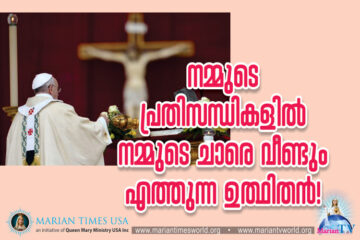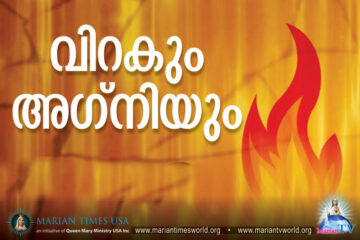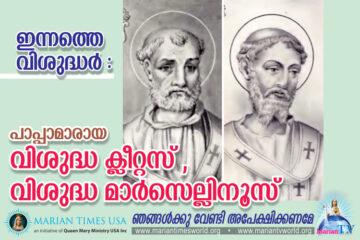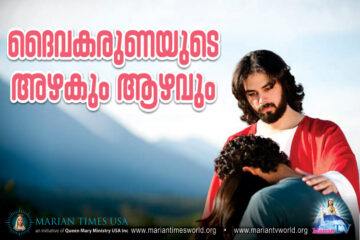“I am the living bread that came down from heaven”
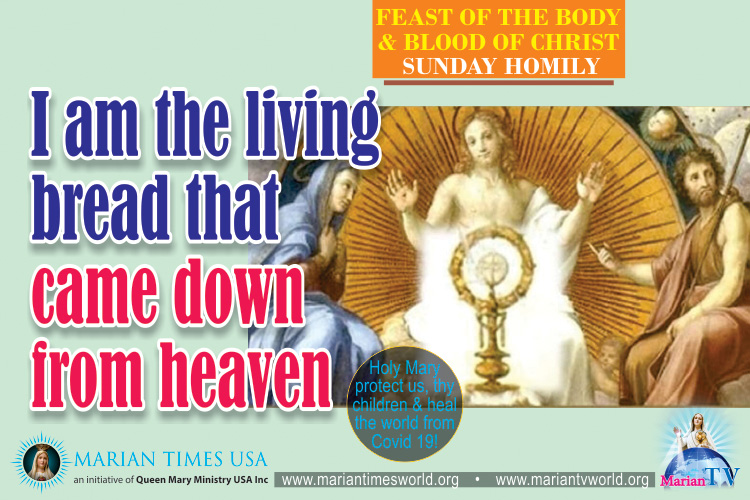
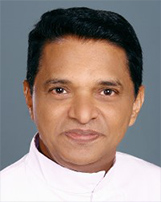
~ Fr. Abraham Mutholath ~
Chicago, USA. ~
SUNDAY HOMILY FEAST OF THE BODY AND BLOOD OF CHRIST
INTRODUCTION
The feast of Corpus Christi or the Most Precious Body and Blood of Christ is celebrated on the Thursday after the Feast of the Most Holy Trinity which is two months after the Holy Thursday. Some dioceses postpone it to the Sunday after the Feast of the Holy Trinity for full participation of the faithful. Though Holy Thursday has been traditionally a commemoration of the institution of the Holy Eucharist, its importance is mixed with the reenactment of the washing of the feet, institution of the priesthood, and remembrance of the agony of Jesus in the garden of Gethsemane. Our Lord had asked to celebrate this feast through visions to St. Juliana in Belgium from 1208 for 20 years. Eventually, church approved this feast in Liège, Belgium in 1246 and later in the universal church in 1264.
Bible Text
(John 6:51) I am the living bread that came down from heaven; whoever eats this bread will live forever; and the bread that I will give is my flesh for the life of the world.” (52) The Jews quarreled among themselves, saying, “How can this man give us [his] flesh to eat?” (53) Jesus said to them, “Amen, amen, I say to you, unless you eat the flesh of the Son of Man and drink his blood, you do not have life within you. (54) Whoever eats my flesh and drinks my blood has eternal life, and I will raise him on the last day. (55) For my flesh is true food, and my blood is true drink. (56) Whoever eats my flesh and drinks my blood remains in me and I in him. (57) Just as the living Father sent me and I have life because of the Father, so also the one who feeds on me will have life because of me. (58) This is the bread that came down from heaven. Unlike your ancestors who ate and still died, whoever eats this bread will live forever.” (59) These things he said while teaching in the synagogue in Capernaum.
Interpretation
Background
The background of today’s gospel passage will help us to understand better the segment that we reflect today. Jesus fed a multitude of 5,000 men and probably an equivalent number of women and children with miraculous multiplication of five loaves of barley bread and two fish. Because of this, people believed that Jesus was a prophet and wanted to make him king. However, he withdrew from there (John 6:1-15). The same crowd searched and found Jesus on the next day. Jesus told them: “Amen, amen, I say to you, you are looking for me not because you saw signs but because you ate the loaves and were filled. Do not work for food that perishes but for the food that endures for eternal life, which the Son of Man will give you.” (John 6: 26-27). Thus, Jesus introduced the topic comparing it with the material food that was miraculously served for the 5,000 men and the manna that God gave for 40 years when the Israelites were in the desert.
(51) I am the living bread that came down from heaven; Whoever eats this bread will live forever; The bread that I will give is my flesh for the life of the world.”
I am
“I am” is the name of God that God revealed to Moses when he asked for God’s name at Mount Sinai (Exodus 3:13-14). John the Evangelist presents Jesus, the “I am” incarnate, using the same name seven times clarifying who “I am” is.
- “I am the bread of life; whoever comes to me will never hunger, and whoever believes in me will never thirst.” (John 6:35)
- “I am the light of the world. Whoever follows me will not walk in darkness, but will have the light of life.” (John 8:12)
- “I am the gate. Whoever enters through me will be saved, and will come in and go out and find pasture.”(John 10:9)
- “I am the good shepherd. A good shepherd lays down his life for the sheep.” (John 10:11)
- “I am the resurrection and the life; whoever believes in me, even if he dies, will live.” (John 11:25)
- “I am the way and the truth and the life. No one comes to the Father except through me.” (John 14:6)
- “I am the vine, you are the branches. Whoever remains in me and I in him will bear much fruit, because without me you can do nothing.” (John 15:5)
All the above seven attributes give a glimpse of who Jesus is for us. Here we are focusing on the first of the above, “I am the living bread.”
The living bread
Bread is necessary for humans to sustain their physical lives. Jesus came down from heaven as spiritual bread to nourish our souls. Our souls cannot live without this lifegiving bread.
Bread is made from the plants or trees using their leaves, stems, roots, seeds, or nuts. Besides, we also nourish ourselves by eating the fruits, fish, and meat of animals and birds. A partial or full sacrifice of life of plants or animals are involved in the making of our food or bread. Likewise, the sacrifice and death of Jesus was necessary for our spiritual food. By his self-sacrifice, Jesus became our living and lifegiving breadfor our souls.
In the Lord’s prayer, Jesus taught us to pray, “Give us this day our daily bread.” That bread is not just the physical bread that we make or buy from market, but the supernatural bread, the Holy Eucharist. God fed Israelites with manna daily in the desert for forty years for their physical survival until they reached the promised land. Jesus is nourishing the Christians with another supernatural bread, his Body and Blood, until we reach heaven, the next and perfect promised land.
Bread that came down from heaven
The listeners of Jesus knew of the bread from heaven that was the manna that God provided daily from above. God told Moses: “I am going to rain down bread from heaven for you.”(Exodus 16:4). “In the evening, quailc came up and covered the camp. In the morning there was a layer of dew all about the camp.” (Exodus 16:13). Jesus is the new bread and flesh that came down from heaven to sustain our spiritual life and he continues nourishing us with the Holy Eucharist which is his own body and blood.
As per the instruction of God, Moses asked Aaron to put full omer (measure) of manna in a jar and place it in front of the covenant of the Lord in the Tabernacle (Exodus 16:33-34). Thus, the Israelites used to keep manna in a jar close to the Ark of the Covenant in the Holy of Holies. In the New Testament we place the new manna, the Holy Eucharist, in a tabernacle close to the altar that represents the throne of the Almighty Lord.
Whoever eats this bread will live forever
Eating the living bread, that is the body and blood of Jesus, is required for eternal life. The physical food can keep our life only until death. The bread that Jesus gives is for the nourishment of our eternal soul. This is emphasized in the following verses.
(52) The Jews quarreled among themselves, saying, “How can this man give us [his] flesh to eat?”
Unlike murmuring, there was a real fight from the part of Jews who could not understand what Jesus meant by asking to eat his body while he was alive. It was beyond human reasoning. The Jews had different opinions on what Jesus said and that led them to quarrel among themselves. For Jews, eating the flesh of a human and of any live creature was unlawful. Some might have taken it in a literal sense and others in metaphorical sense but could not come to an understanding of what Jesus meant by his strange statement.
(53) Jesus said to them, “Amen, amen, I say to you, unless you eat the flesh of the Son of Man and drink his blood, you do not have life within you. |
Amen, amen, I say to you
Usually “amen” is used at the end of prayers, psalms, blessings, or curses to express the affirmation of the participants. Jesus used it at the beginning of his own statements to give emphasis or call the attention of his listeners. Jesus used amen twice to give additional importance to what follows in his speech. In John’s gospel, Jesus used this doubled “Amen, Amen” 25 times followed by important messages.
Unless you eat the flesh of the Son of Man
While the Jews were disputing on what Jesus meant by eating his flesh, he emphasized his statement using “amen, amen” and “unless you eat.” This reminds us of the first Passover meal in Egypt. During that Passover, the Israelites slaughtered a Passover victim, collected its blood in a basin, and applied the blood to the lintel and two doorposts using a bunch of hyssop (Exodus 12:22). In the New Testament Passover, Jesus perfected this by offering himself as the Passover victim to save the firstborn children of God who would join the covenant with the Lord. However, there was a second part of this Passover; that was eating the roasted meat of the Passover lamb with unleavened bread and bitter herbs (Exodus 12:8). When we participate in the Holy Mass, we are partaking in the sacrifice of Jesus and it is completed only when we consume his body by receiving the Holy Eucharist. This Holy Eucharist is our bread of spiritual life and required nourishment for our journey to heaven.
The flesh of the Son of Man
“Son of man” and “Son of God” are used in the Bible only for Jesus. Since Jesus is God and man both could be applicable to him. The difference is that the son of man refers to the humanity of Jesus Christ. Jesus uses it here because he was referring to eating his flesh that is part of his human entity.
Drink his blood
From creation until the Great Flood, humans and animals were vegetarians (Gen. 1:29-30). God changed the rule after the flood allowing people to eat meat and vegetables (Gen. 9:3). However, God made restriction stating, “But you must never eat any meat that still has the lifeblood in it.” (Gen. 9:4). God told the Israelites, “You must never eat or drink blood, for the life of any creature is in its blood.’ So whoever consumes blood will be cut off from the community.” (Lev. 17:14). Avoiding consumption of blood, that represents the life of the animal, is a reminder that animals were not originally intended for eating. Blood of the sacrificed animal was to be offered to God in the Temple as ransom for the lives of Israelites.
It was scandalous for Israelites to hear Jesus asking them to drink his blood that was prohibited in the Torah. But for Jesus, who purposefully offered his blood to drink, had a special meaning to it. Through his precious blood, Jesus was offering his life to us. So, when we drink the blood of Jesus in the Holy Eucharist, he makes his dwelling within us as the temple of God.
Blood is also used to make covenant. At Mount Sinai, when God made covenant with Israelites, “Moses then took the blood, sprinkled it on the people and said, ‘This is the blood of the covenant that the LORD has made with you in accordance with all these words.’” (Exodus 24:8). At the last supper, Jesus took the cup and said, “Drink from it, all of you.This is my blood of the covenant, which is poured out for many for the forgiveness of sins.” (Mathew 26:27-28). So, when we partake in the cup of Jesus during the Holy Mass, we are renewing our covenant with Jesus.
… You do not have life within you.
In the positive sense, when we eat the body of Jesus and drink his blood we will have life within us. This life is the regaining of the spiritual death happened because of original sin. The regained life will lead us to eternal life.
Show bread of the Old Testament and Holy Eucharist in the Church tabernacle
The bread of presence or Showbread was a foreshadow of the Holy Eucharist in the tabernacles in our churches. This consisted of 12 loaves of unleavened bread representing the 12 tribes of Israel, made of fine flour arranged in two piles on a table made of acacia wood and covered with pure gold. It was known as “the bread of presence” because it was placed in the Holy place at the presence of the Lord in the Tabernacle and later in the Temple of Jerusalem. This bread was kept always on the table and replaced on every sabbath day. When removed for replacement, the bread was eaten only by Aaron and his sons in a holy place (Lev. 24:5-9). It is believed that Jesus pointed to this bread of the presence and declared, “I am the bread of life; whoever comes to me shall not hunger, and whoever believes in me shall never thirst.” (John 6:35).
Origin of the Feast of Corpus Christi
The feast of the Most Precious Body and Blood of Jesus, also know in Latin as “Corpus Christi” (The Body of Christ), was not a separate feast from the Holy Thursday until the 13th century. This feast that celebrates the real presence of Jesus Christ with his body, blood, soul, and divinity in the Holy Eucharist is associated with a Eucharistic miracle and a visionary nun, St. Juliana.
Visions to St. Juliana
Juliana (1193-1258 April 5) and her twin sister Agnes became orphans at the age of five. She was educated by Augustinian nuns of Mont Cornillon in Belgium. She joined the conventat the age of 13 and later became superior of the convent. She had great devotion to the Blessed Sacrament and desired for a special feast of the Holy Eucharist. When she was 16, she had a vision of the church under the appearance of a full moon with a dark spot on it. Jesus revealed to her that the full moon represented ecclesiastical calendar and the dark spot wasthe absence of the feast of the Blessed Sacrament. Jesus asked her to communicate to church authorities to establish a feast of the Holy Eucharist. The visions continued for 20 years from 1208.She shared her experience to ecclesiastical authorities. Local Bishop Robert called a synod in 1246 and ordered a feast in his diocese in the following year. However, he died on the same year and the feast was celebrated the next year as directed.
Eucharistic Miracle
Fr. Peter of Prague, a German priest, while making his pilgrimage to Rome in 1263, celebrated Holy Mass at the Church of St. Christina in Bolsena, Italy. Influenced by the doubt and debate among theologians during that period on the real presence of the Body and Blood of Christ in the consecrated bread and wine, Fr. Peter also had the same doubt. As if a confirmation for his doubt, while he recited the consecration prayers during the Holy Mass, blood flowed from the host onto the altar and corporal. Fr. Peter reported this to the then Pope Urban IV who had moved from Rome to Orvieto at that time. The pope assigned delegates to investigate the miracle and ordered to move the host and blood-stained corporal to Orvieto. The relics were then placed in the Cathedral of Orvieto.
Based on the visions of St. Juliana and the confirmation of its truth through the Eucharistic miracle at Bolsena, Pope Urban IV established the feast of Corpus Christ by his bull “Transiturus” on September 8, 1264. At the request of the pope, St. Thomas Aquinas composed beautiful hymns for the feast.
Message
- Let us acknowledge and thank the Lord who provides us with material and spiritual bread that we need daily. Without God’s support, the efforts of humans to produce food would be in vain.
- Let us respectfully behave in the church where we have the altar representing the throne of the Almighty God and the tabernacle, where we have the real presence of Jesus in the form of consecrated bread.
- Since we participate in the Holy Mass and receive the Holy Eucharist on very Sunday or even daily, they become a routine for us. We need to make sure that we participate in it with much preparation and keeping the sanctity of the sacrament.
- Jesus did not give vision of the full moon with a dark spot on it and reveal its interpretation to the pope, bishop, theologians like St. Thomas Aquinas, or Catholic King but only to Juliana, a humble nun. Many other apparitions and visions of Jesus and Mary were also offered to simple and humble people or children. Let us find value in humility and simplicity and believe in the Holy mysteries of God.
മരിയന് ടൈംസിലെ ഇന്നത്തെ പ്രധാനപ്പെട്ട അപ്ഡേറ്റുകള് താഴെ ലഭിക്കുന്നതാണ്.


